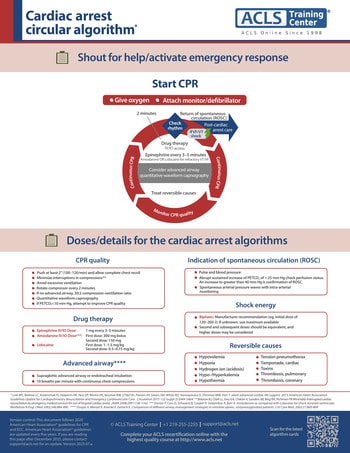BLS primary survey for respiratory arrest: Basic life support
Last updated: March 15, 2022
Version control: Our ACLS, PALS & BLS courses follow 2020 American Heart Association Guidelines for CPR and ECC. American Heart Association guidelines are updated every five years. If you are reading this page after December 2025, please contact support@ACLS.net for an update. Version 2021.01.c
The main focus of the BLS Primary Survey is early CPR and early defibrillation, if needed. For a patient in respiratory arrest, however, the focus is on breathing and airway issues. The process starts with assessing the patient and then perform an appropriate action. Each step in the survey has an assessment and actions to follow.
| Assessment | Action |
|---|---|
| Is the patient breathing? | Look for the rise and fall of the patient's chest. |
| Does the patient have a pulse? | The healthcare provider can take 5–10 seconds to check for a pulse. |
| AED | When the AED arrives, turn it on and follow the prompts |
Is the patient breathing NORMALLY? (small gasping breaths are not considered normal.
If no pulse – BEGIN COMPRESSIONS at a rate of 100/min to 120/min.
If not sure if a pulse is present, BEGIN COMPRESSIONS at a rate of 100/min to 120/min.
If pulse is present and breathing absent, begin ventilation at a rate of 10 per minute or once every 6 seconds using mouth to mouth or bag valve mask.
The last step, defibrillation, is part of the primary survey, but is not required for respiratory arrest as the patient has a pulse for this case. Therefore the AED will advise the user "no shock advised, continue CPR if necessary."
Planning to certify/recertify ACLS?
Get a reminder when you need to take the exam

Written by Jessica Munoz DPN, RN, CEN, providing nurse training at Yale New Haven Health-Bridgeport Hospital since 2022. Previously in healthcare and education at Griffin Hospital, St. Vincent's College of Nursing and Sacred Heart University Medical Center.
More by this author:
